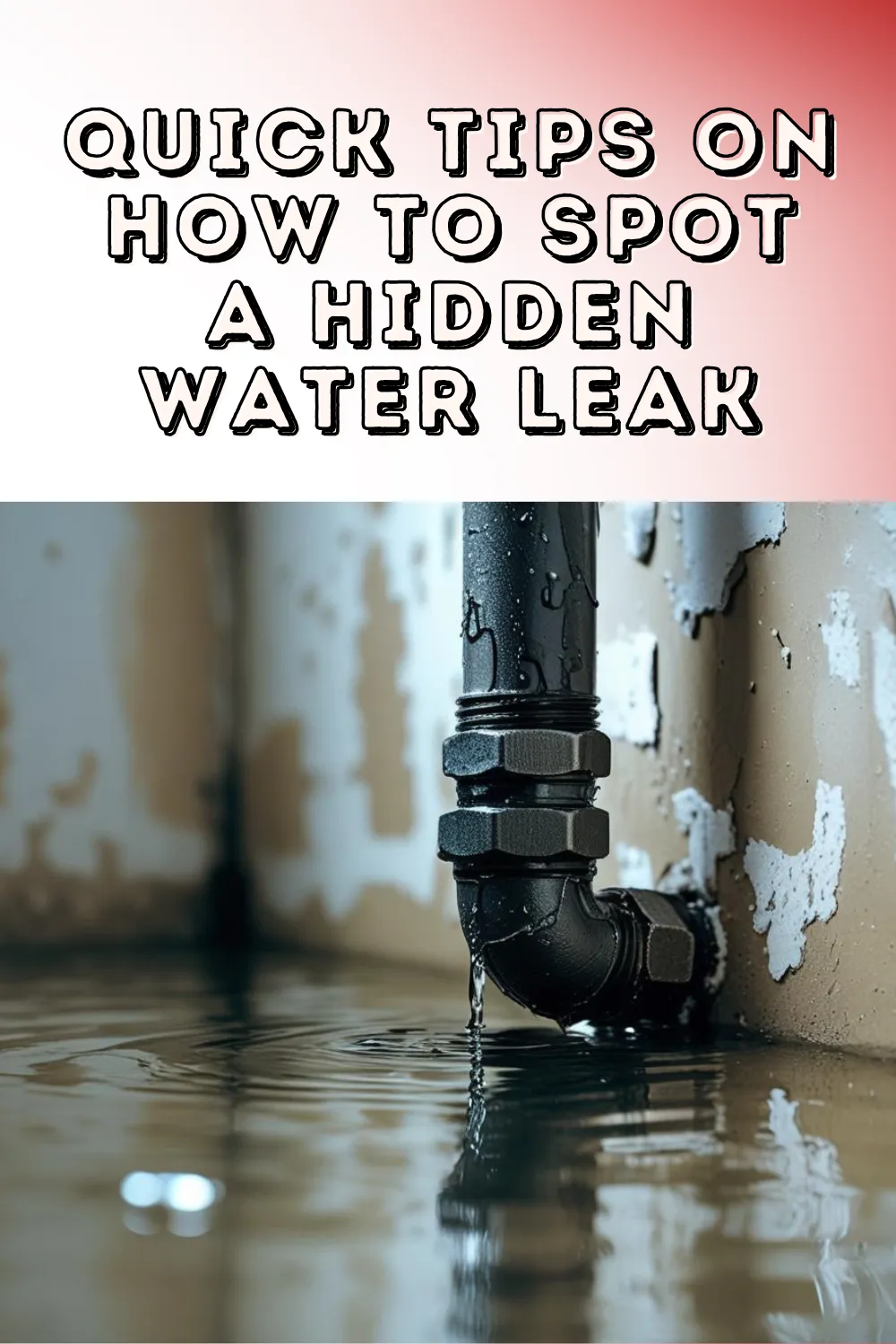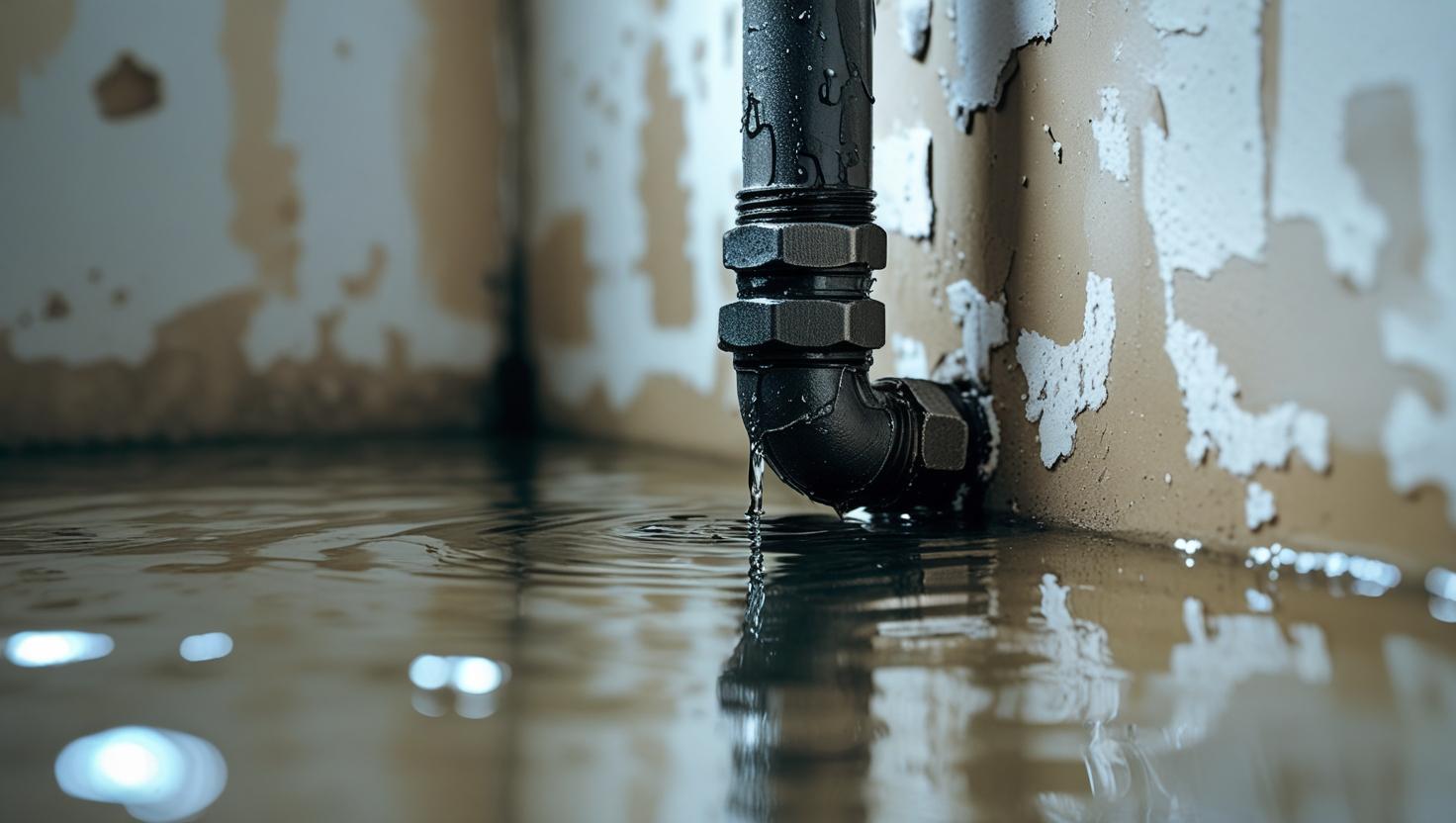
How to Spot a Hidden Water Leak Before It Gets Worse Fast
"Catching a hidden water leak early isn't just smart—it’s the difference between a quick fix and costly damage waiting to happen." - Appliance Boss
Introduction
Water leaks are sneaky. They often start small—quiet, invisible, and seemingly harmless. But behind your walls, beneath your floors, or tucked away under a sink, even a minor drip can evolve into serious damage. Knowing how to spot a hidden water leak before it gets worse and save yourself from thousands in repairs is a skill every homeowner should have in their toolkit.
Why Hidden Water Leaks Are Silent but Serious Threats
Hidden leaks don’t shout—they whisper. Unlike a burst pipe that demands attention, these stealthy leaks slowly soak insulation, rot wood, and encourage mold growth in silence. Over time, the structural integrity of your home can be compromised without you even realizing it.
The High Cost of Ignoring a Leak Too Long
What begins as a tiny crack in a pipe can snowball into warped floors, stained drywall, and even black mold. Worse yet, insurance may not cover the damage if the leak is considered a result of neglect. The longer you wait, the higher the bill—and the bigger the headache.

Understanding Hidden Water Leaks
What Exactly Is a Hidden Water Leak
A hidden leak is any water escape that happens out of sight—within walls, ceilings, floors, or underground lines. These leaks often go unnoticed for weeks or even months, leading to extensive damage over time.
Where Hidden Water Leaks Typically Occur in a Home
Most hidden leaks hide in places with regular water use: bathrooms, kitchens, laundry rooms, crawl spaces, and behind major appliances. Outdoor irrigation and underground pipes can also silently leak without raising alarms until your water bill skyrockets.
Early Warning Signs to Watch Out For
Unusual Spikes in Your Water Bill
A sudden increase in your water bill without a change in usage is a classic red flag. It often indicates water is being wasted somewhere out of sight.
Mysterious Damp or Discolored Walls and Ceilings
Brown or yellow stains, bubbling paint, or unexplained dampness often point to slow leaks inside your walls or ceiling cavities.
Musty or Moldy Smells in Unexpected Places
A persistent mildew odor usually means moisture is present, even if you can’t see it. Mold thrives in damp, dark environments—exactly where hidden leaks love to linger.
Warped Flooring or Peeling Paint
Buckling wood, cracking tiles, or peeling paint and wallpaper are visual clues that water is undermining your surfaces.
Sounds of Dripping or Running Water When Pipes Aren’t in Use
If your home is quiet and you hear a subtle drip or trickle, don’t ignore it. Water should never be flowing when everything is off.
Common Causes of Hidden Leaks
Aging Pipes and Corrosion in Older Homes
Older galvanized or copper piping is susceptible to rust, pitting, and eventual leaks as materials wear down over time.
Leaky Appliances and Water Connections
Dishwashers, washing machines, and refrigerators with water lines can develop small leaks behind or beneath them that go unnoticed.
Faulty Plumbing Installations or Repairs
Improper pipe fittings, poor soldering, or low-quality materials can cause issues long after an install or fix is complete.
Extreme Temperature Changes Causing Pipe Shifts
Temperature fluctuations—common in areas with hot summers and chilly winters—cause pipes to expand and contract, eventually cracking under pressure.
Hidden Leak Hotspots in the Home
Bathrooms: Behind Walls and Under Sinks
Between showers, sinks, and toilets, bathrooms are a high-risk area for slow leaks, especially behind tile or cabinetry.
Kitchens: Dishwasher and Refrigerator Water Lines
Often hidden behind appliances, leaks in these water lines can drip undetected for months, damaging floors and cabinetry.
Basements and Crawl Spaces: Dampness and Pipe Drips
Out-of-sight and usually under-visited, these areas are prime spots for unnoticed leaks that slowly soak into your foundation.
Exterior Walls and Underground Lines
Outdoor spigots, sprinkler systems, and buried supply lines can leak without obvious surface signs—until your water bill tells the tale.
Tools and Techniques to Detect Leaks
How to Use Your Water Meter to Check for Leaks
Turn off all water in your home and watch the meter. If it still moves, a leak is present somewhere in your plumbing system.
DIY Dye Test for Toilets
Place a few drops of food coloring in the tank. If it seeps into the bowl without flushing, your toilet has a silent leak.
Using Moisture Meters and Infrared Cameras
These tools help detect dampness in walls and ceilings, identifying problem areas without having to tear into drywall.
Listening Devices and Leak Detection Equipment
Professionals use acoustic tools to detect the sound of dripping or rushing water behind surfaces, pinpointing leak locations.
When and How to Perform a DIY Leak Check
Step-by-Step Leak Detection Checklist for Homeowners
Start with a visual inspection, test fixtures and appliances, monitor your water meter, and perform targeted tests (like the dye test) monthly.
How Often You Should Check for Hidden Leaks
A full home inspection for hidden leaks should be done at least twice a year—ideally in spring and fall.
Mistakes to Avoid When Checking for Leaks
Don’t rely on visual inspection alone. Just because you don’t see water doesn’t mean a leak isn’t actively causing damage.
The Role of Water Pressure in Hidden Leaks
Why High Water Pressure Can Lead to Leaks
Too much pressure puts stress on joints and fixtures, causing pinhole leaks over time. Most homes shouldn’t exceed 60 psi.
How to Test and Adjust Water Pressure at Home
A simple gauge on an outside spigot will show pressure. If it’s too high, consider installing a pressure regulator.
How Leaks Lead to Mold and Structural Damage
The Link Between Moisture and Mold Growth
Mold spores need just 24-48 hours of moisture to take hold. A hidden leak creates the perfect breeding ground in secret.
How Long-Term Leaks Undermine Your Home’s Structure
Water weakens wood framing, rusts metal fasteners, and erodes drywall—damaging your home’s very skeleton.
Hidden Leaks and Health Concerns
Respiratory Problems Linked to Mold Exposure
Mold exposure can trigger asthma, allergies, and respiratory infections—especially dangerous for kids and seniors.
Bacteria and Contaminants in Stagnant Water
Leaking pipes can lead to pools of stagnant water, a breeding ground for harmful bacteria and pests.
How to Prevent Hidden Leaks from Forming
Installing Leak Detectors in Key Areas
Smart sensors placed near appliances or under sinks can alert you via app the moment a leak begins.
Regular Maintenance for Appliances and Pipes
Annual inspections, tightening connections, and replacing aging hoses or valves go a long way in prevention.
Insulating Pipes to Prevent Cracks and Freezing
Pipe insulation protects from temperature swings and reduces the chance of cracking in winter.
When to Call a Professional Plumber
Signs a Leak Is Beyond a DIY Fix
If your drywall is stained, your water bill keeps climbing, or mold is forming—don’t wait. It’s time to call in help.
What a Leak Detection Specialist Can Do That You Can’t
Professionals bring advanced tools like thermal imaging, pressure testing, and in-wall acoustic listening that DIYers simply can’t match.
How to Choose a Reliable Leak Detection Service
Questions to Ask Before Hiring a Plumber
Are they licensed? Do they offer upfront pricing? What technology do they use? Ask before you book.
Why Local Experience Matters for Plumbing Inspections
A technician who knows Bakersfield homes and climate challenges is more likely to spot common local issues faster.
Cost Breakdown: DIY vs. Professional Leak Repairs
Typical Cost of Leak Damage Repair
Depending on damage, repairs can range from $150 to $2,000+. Catching it early slashes that figure.
When Hiring a Pro Is Actually the Cheaper Option
Yes, pros charge for their time—but a fast, accurate fix now often costs far less than repairing severe water damage later.
The Long-Term Savings of Early Leak Detection
Preventing Water Damage Before It Starts
Leak detection is like insurance—it stops damage before it can spread, saving you serious money and stress.
Reducing Water Waste and Lowering Monthly Bills
Just one dripping pipe can waste thousands of gallons a year. Fixing leaks trims both your bill and environmental impact.
Insurance and Hidden Leak Coverage
What Homeowners Insurance Covers
Most policies cover sudden and accidental water damage—not long-term leaks due to neglect. Knowing the difference matters.
How to Document a Leak for a Claim
Take photos, record dates, and keep all receipts from inspections or repairs. This paperwork can make or break your claim.
Technology That Helps Spot Leaks Early
Smart Leak Detectors and Water Sensors
These gadgets alert you immediately via phone if moisture is detected—some even shut off your water automatically.
Wi-Fi-Connected Shut-Off Valves for Smart Homes
Advanced systems can be programmed to shut off water flow the moment an abnormality is detected, preventing disaster.
Protecting Your Home Year-Round
Seasonal Plumbing Checks for Leak Prevention
Check pipes, inspect seals, and monitor for musty smells during seasonal transitions when plumbing strain is highest.
Winterizing Tips to Avoid Burst Pipes
Drain outdoor lines, insulate exposed pipes, and keep cabinets open to allow warmth near plumbing on freezing nights.
Conclusion
Hidden water leaks can quietly erode your home’s structure, drain your wallet, and threaten your health—long before visible damage shows up. But with the right knowledge, tools, and proactive habits, you can catch these silent intruders early and avoid major disaster.
Knowing how to spot a hidden water leak before it gets worse and save doesn’t just protect your home—it brings peace of mind. Pay attention to early signs, schedule regular inspections, and invest in smart leak detection technology to stay one step ahead of potential damage.
If you suspect a leak or simply want a professional to take a closer look, don’t wait for the problem to grow. Zip Does Plumbing is here to help with expert leak detection and repair services tailored to the needs of local homeowners.
Call us today at (661) 370-2701 or visit www.zipdoesplumbing.com to schedule a service.
Protect your home, your health, and your savings—one leak at a time.
